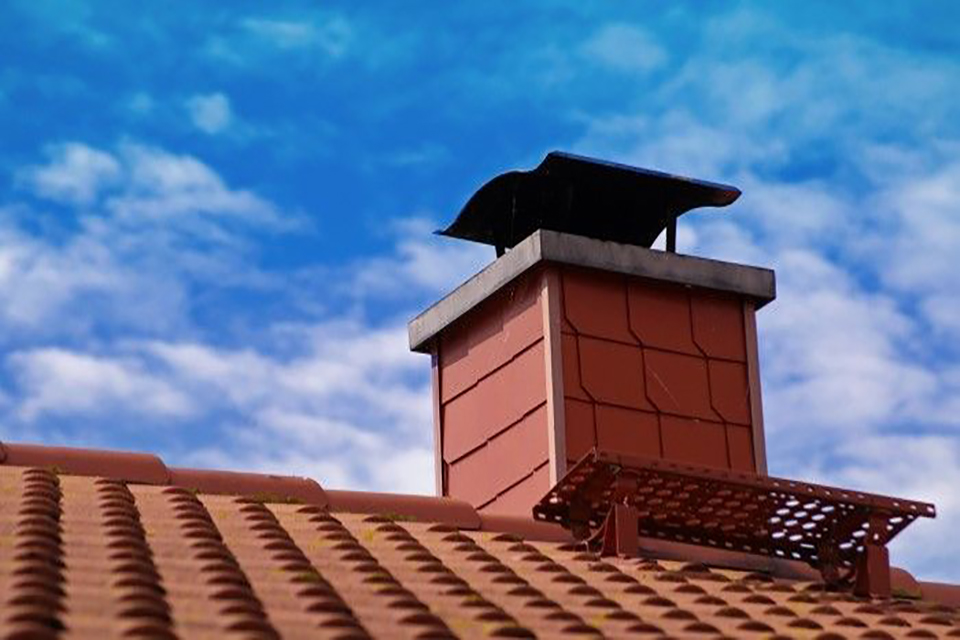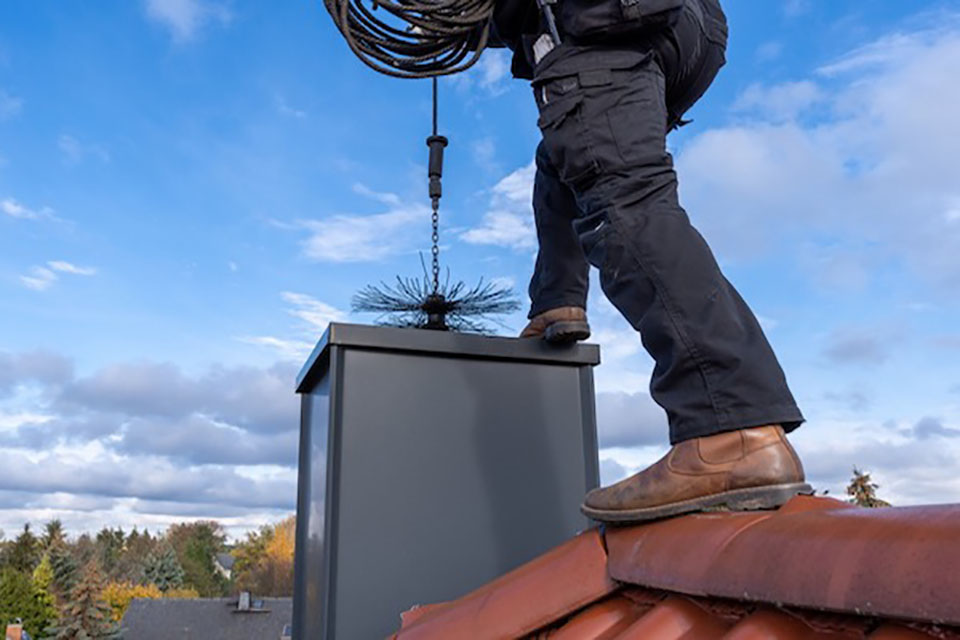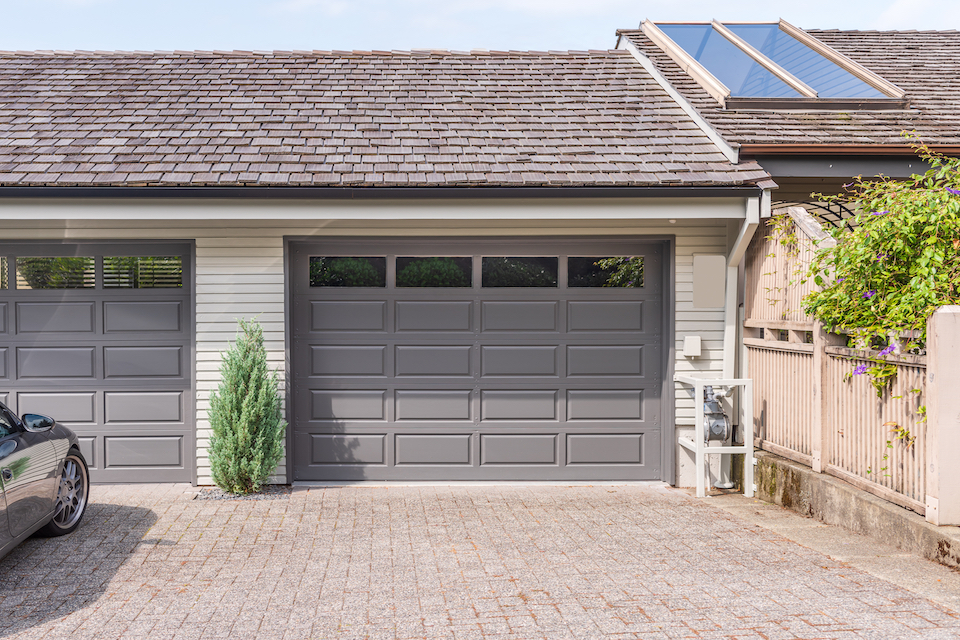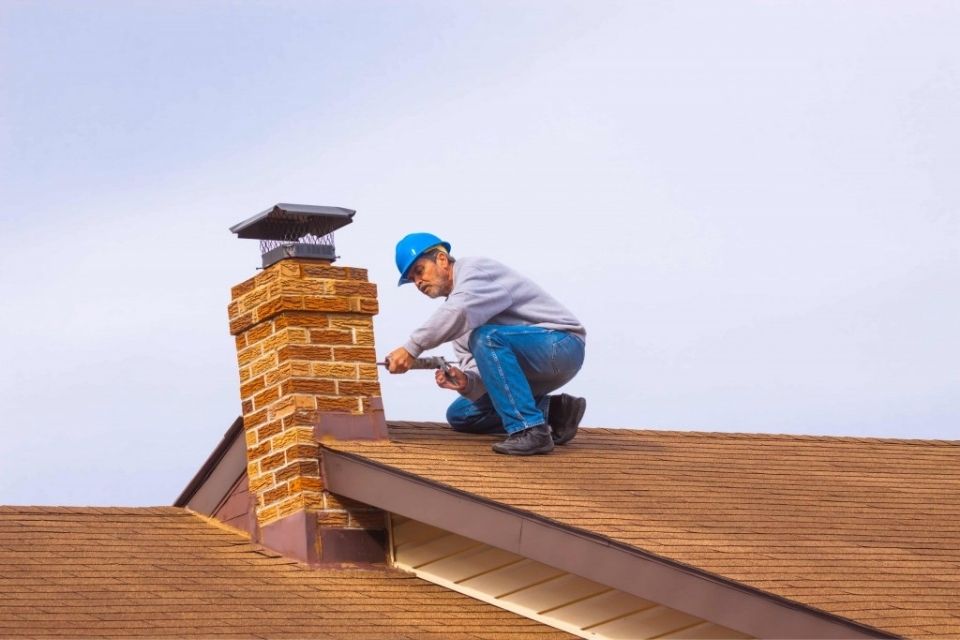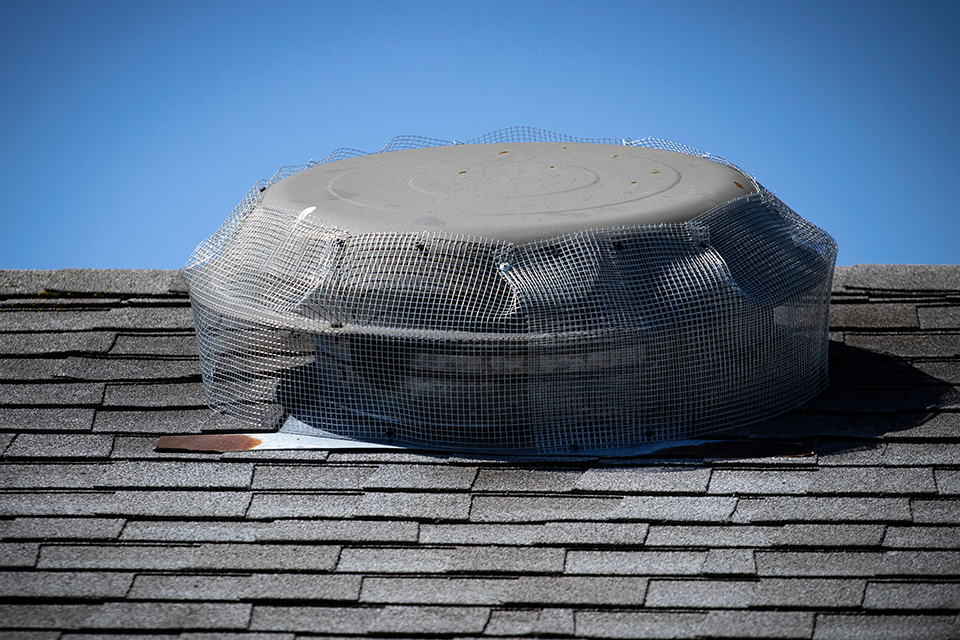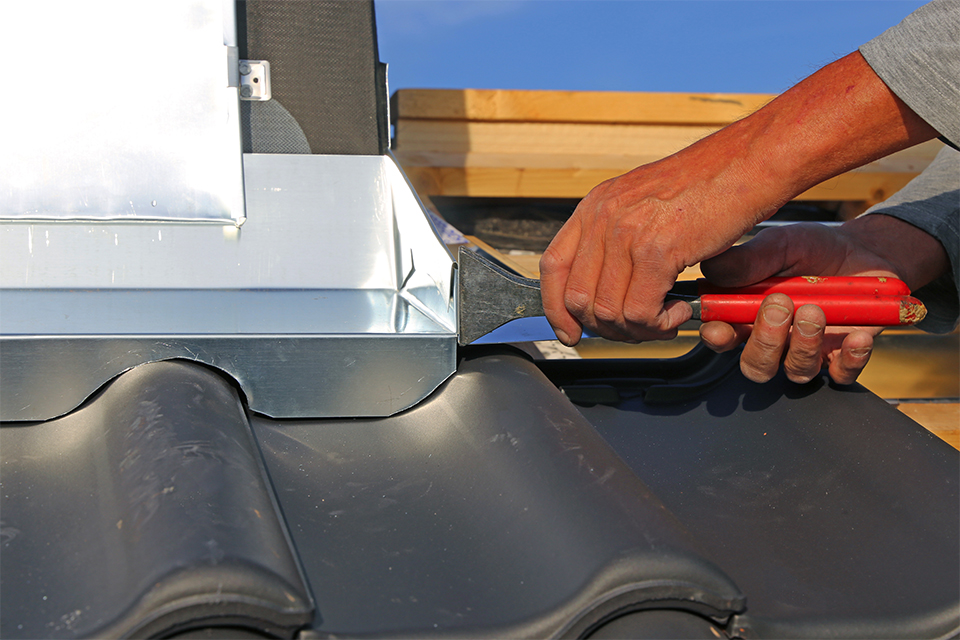How to Spot a Leaking Chimney
There are many signs you should look out for which indicate a leaking chimney. For this section we will look at different signs such as condensation, moisture, wall stains and musty/damp odours.
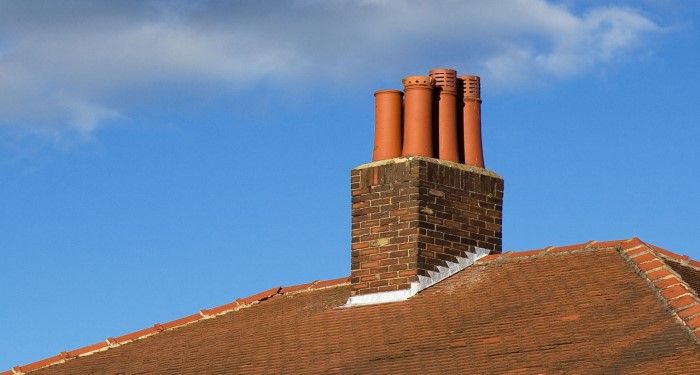
Condensation
If you notice that there is condensation present in the fireplace, this may be a sign that your chimney is leaking. To establish how much condensation there is you can place the back of your hand on the area with condensation and then compare it to any drier parts.
A damp meter can be used to make precise measurements. Some of the explanations for condensation in your chimney include issues with guttering, chimney ventilation and a shared chimney.
Sound of Dripping Water
The sound of dripping water coming from inside your chimney also suggests a leak. It’s common for this issue to present itself with chimney leaks in heavy rain. This may be due to ineffective covering atop the chimney. However, other issues may be present.
Other possible causes include leaking bricks, damaged tiles and a problem with the guttering. A broken gutter or one with a blockage can result in water accumulating in undesired areas which can cause rainwater to reach the inside of your chimney.
Moisture
Poor chimney ventilation or weak or broken flashing can result in moisture amassing inside your chimney due to a leak. Other problems can also explain this issue. While moisture present in a chimney is most likely the result of rain or condensation which has made it through a leak, salt contamination on the chimney’s wall plaster can also lead to moisture.
Water
If you find noticeable to large quantities of water in your chimney, this indicates a serious leak. Continual water erosion can cause moisture-related damage and bricks to fall apart and into the chimney.
This damage could lead to clogs which will increase the risk of carbon monoxide leakage. Carbon monoxide poisoning can be life-threatening.
Leaks Staining Wall
You may also notice a sign of chimney leakage in the form of wall stains. Water can leave its mark by staining the walls of your chimney. This can result from problems with your guttering or chimney stack mortar among other issues.
Musty/Damp Odours
Moisture present in your chimney can lead to musty/damp odours. This is another sign that there is a leak coming from your chimney. Insufficient protection at the top of your chimney is often to blame.
Cracked Masonry/Interior Plaster
Cracks in the masonry or interior plaster of your chimney can cause leaks. If you notice such fractures, it may mean that water is able to leak into your chimney.
Why is my Chimney Leaking?
We will now look at reasons why your chimney might be leaking. We will consider possible causes including damaged bricks and mortar, damaged flashing and a cracked chimney crown.
Damaged Flashing
Flashing is a metal sheet which is installed around the stack of your chimney. It is designed to seal joints and prevent water from leaking into your chimney. However, over time it can become worn and damaged. The ideal way to investigate this issue further is if you have safe access to the roof chimney or attic (where a window is present) so that you can take a closer look at the chimney stack.
Signs that the flashing is damaged are a build-up of salts, the sight of sunlight piercing through any holes or broken elements of the chimney stack and evidence of leaking water in this area of the chimney.
Damaged Bricks and Mortar
Another potential reason for a leaking chimney is damage to the chimney stack mortar or/and bricks. The pointing in the bricks and mortar of the chimney may be damaged allowing water to leak through.
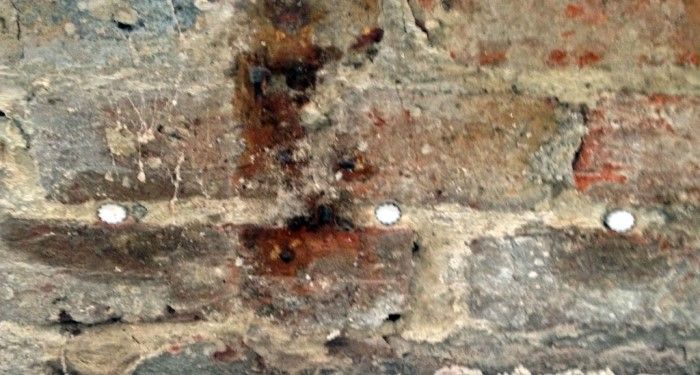
If you have noticed evidence of a leak but the chimney is sufficiently capped and has good ventilation, this may suggest that the issue is with the bricks and mortar. A safe close-up view of the chimney stack may also present evidence of damage in a similar way to damaged flashing.
Cracked Chimney Crown
A cracked chimney crown can also result in leaks. The chimney crown is positioned atop the chimney and above the brickwork. It is usually made of cement and is designed to stop precipitation from entering the chimney and causing water damage. If the chimney crown is cracked, its ability to prevent leaks will be reduced.
One sign to look out for that a cracked chimney crown is behind a leak is that there is no evidence of other prominent causes such as damaged flashing or damaged bricks and mortar. A close-up view with proper safety precautions taken may allow you to see for yourself whether the chimney crown is damaged.
Rain Pouring Through Top of Chimney
If your chimney is not sufficiently capped, this can allow rain to pour straight through the top of the chimney resulting in a significant leakage. If your chimney is open-topped you may notice that once there is heavy precipitation the rain will pour into your chimney. You might also be able to view this directly if you have a safe and appropriate place to take a look.
Faulty or Absent Roof Tiles
Damage to or a lack of roof tiles can also cause a leak. This may not only be limited to tiles near the chimney stack. This is because water can still make its way from a separate vulnerable area of your roof into the chimney. If you have a safe way to inspect your roof, check for damaged or worn tiles and look for any areas of the roof which may be missing a tile.
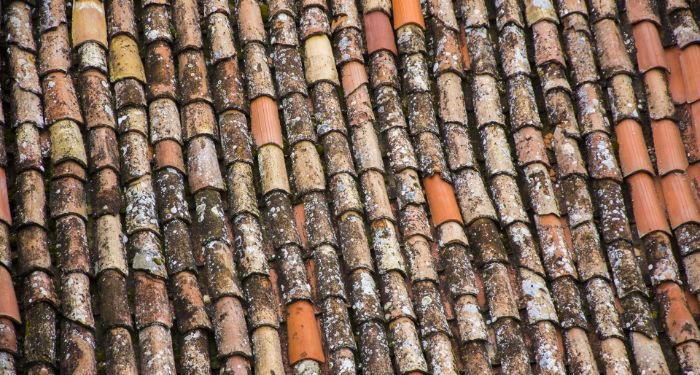
Another piece of evidence that the problem is related to roof tiles is that you have found little to no evidence that other common causes of chimney leaks are behind the issue.
Issues with the Gutter
If your house gutters have become blocked or broken, this can cause water to accumulate in undesired areas before pouring or trickling into your chimney. A damp chimney is a common sign of a gutter-related problem.
A safe inspection of your household’s guttering may also provide evidence or/and proof that broken or blocked gutters are causing the leak.
How to Find a Chimney Leak
In this section we will discuss how you can identify the source of a chimney leak. You should first check whether or not your chimney is capped and if it is, you should inspect whether or not the chimney cap is damaged or broken.
If no issue is found here, it is best to then inspect the chimney mortar joints for signs of damage.
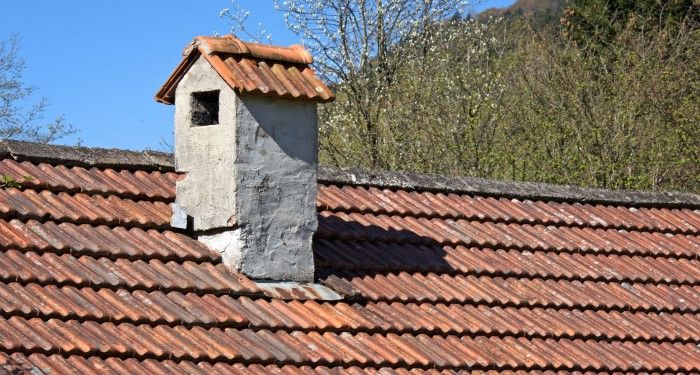
If you still have no success, in the following order you should undertake inspections of: the chimney flashing, bricks and mortar, roof tiles and guttering.
One method for finding a chimney leak involves utilising plastic wrapping. This method is as follows:
- On the roof, wrap plastic along the chimney about 18 inches up beginning from a point that is half an inch above where the chimney and roof meet. Leave the flashings at the base of the chimney uncovered but cover the chimney’s bricks from this area in full.
- Station a person either in the attic or from a point where the person can view the ceiling directly below the roof. Use a hose to pour water along the roof from the lower side of the chimney. Continue for two minutes. Avoid letting the water make contact with the chimney or the flashing on the base. The person below the roof should look out for where they first notice a drop of water. Mark the spot on the roof that is directly above the location where the first drop of water was spotted. The spot should be marked firmly with a lumber crayon to prevent it fading away before repairs can be undertaken.
- If no leak is found on the front or low side of the chimney, you should pour the water one shingle at a time along the chimney’s side with a minute spent per shingle. The water should always be running downhill.
- If no leak is found again, repeat this process but on the opposite side of the chimney, one shingle per minute. If a leak is found, it should be marked. You may also find other leaks after discovering the first. If it is found that water is beginning to accumulate on the drywall of the ceiling, a hole should be poked in the centre of the spot that is wet before allowing it to drip into a bucket beneath. Allow the drywall to drain fully prior to moving on to the next step.
- If there are no leaks found on either side of the chimney, repeat this process on the back of the chimney.
- If you have still found no leaks after this point, it indicates that the leak is present above the base flashing or somewhere near the shingles of the roof.
- You should then take off the plastic wrap and re-wrap it in a way that the bottom edge is just higher than the highest piece of counter flashing. The chimney should then be wrapped above the point where the flashing reaches and enters the bricks.
- Start with the front and then work your way to the sides and finally the back, running water around the chimney while the person below looks for a leak. If you still find no leak, it means that the leak is either being caused by the cap, mortar joints or bricks.
- Remove the plastic and repeat the water process on every brick in search of a leak. If no leak is found still, then undertake the same process in regard to the mortar cap.
This method should allow you pinpoint the location and cause of the leak. Remember to take all necessary safety precautions when performing this investigation. You may prefer to hire a professional to undertake this work.
Chimney Leak Repair
Earlier in this article we laid out a list of possible reasons for chimney leakage. In this section we will break down how you can fix each of these problems. We will discuss repairs for issues such as damaged flashing and a cracked chimney crown.
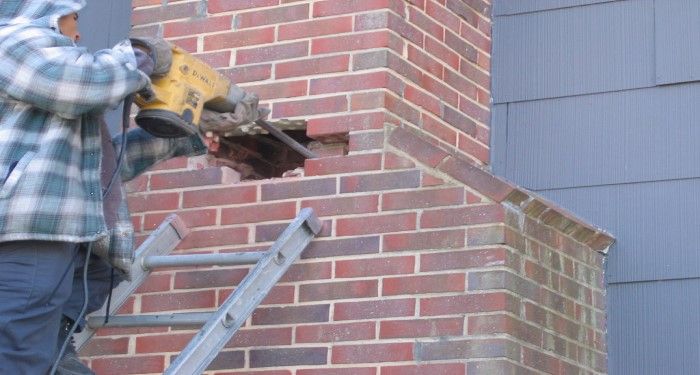
Damaged Flashing Repair
In the case of leaking chimney flashing, you may need chimney flashing repairs or a replacement. DIY flashing tape can be employed if you wish to repair the flashing by yourself while taking any necessary safety precautions. If you have any doubts, you should hire a professional to fix or replace the damaged flashing. Your chimney should subsequently be damp proofed.
Damaged Bricks and Mortar Repair
In most cases the bricks and mortar will require repointing although it may be the case that replacements will be needed.
Cracked Chimney Crown Repair
Fixing a cracked chimney crown can either be done DIY or by a professional. If you choose to fix the problem yourself, you should use a sealant to secure any cracks in the crown itself and any found in the seam connecting the crown and bricks. The chimney sealer used should be evened out for maximum effect. Any larger cracks should also be filled with patching cement or a 100% silicone caulk.
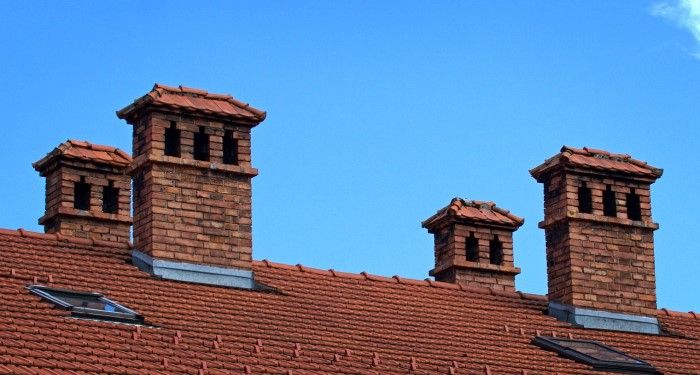
Wrap the chimney crown with a quarter of an inch of duct tape. The tape should be pressed into the brick’s vertical joints. Every flue liner 1 inch above the crown should also be taped. Finally, canvas tarps should be laid out around the chimney’s base to prevent crown sealer dripping onto any shingles.
Stopping Rain Pouring Through Top of Chimney
This problem is usually solved by installing an effective chimney crown at the very top. This will prevent rain from pouring into the chimney.
Faulty or Absent Roof Tiles
Cracked roof tiles can sometimes be repaired with the use of cement or silicone caulking. However, this will likely only act as a short-term solution. It’s far more preferable to replace any broken tiles or fill in spots with missing roof tiles as soon as you can. Roof tiles can be installed either DIY or through the work of a hired professional.
If undertaken DIY, you will need appropriate tools to replace the tiles and what tools should be used will depend on the tiles in question. You will also need nails, a hammer, battens and a water proofing underlay.
Guttering Repairs
If your gutters are simply blocked, cleaning them may solve your problem. However, more action will be required if the gutter is damaged or broken. Once more, fixing or replacing gutters may be done DIY but if you are unsure about any aspects, you should hire a professional.
When it comes to cast iron gutters, if the joints of a gutter require cleaning, you should first unbolt them, clean the joints with a wire brush prior to using a metal paint with rust impeding qualities. Once dried, gutter sealant can be used on the joint before the gutter is bolted back in place. uPVC gutters are another common form of guttering.
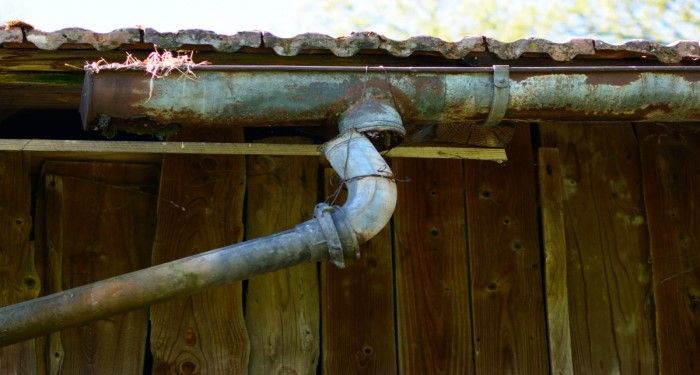
If you need to repair this type of gutter, you should replace any rubber seals or connectors which have worn or broken along the joints or stop ends of the gutter. You should still ensure that expansion gaps of roughly 7mm are left after installing the new fittings. If the gutter is damaged beyond repair, it will need a replacement.
Preventing Your Chimney from Leaking
There are many steps you can take to prevent a chimney leakage from happening in the first place. We will now lay out various approaches you can take to prevent a leak such as through regular cleaning and regular chimney sweeping.
Regular Cleaning
One of the best ways to protect your chimney against leakage is by regularly cleaning its interior. A chimney brush can be used to clear the chimney of any debris, soot and dust that is gathering along its walls. This will reduce the chance of damage occurring.
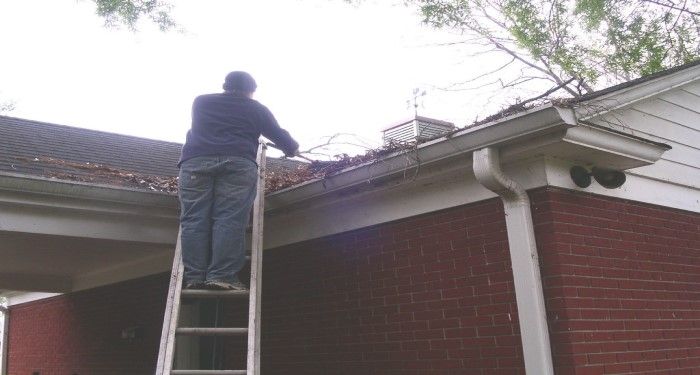
Regular Chimney Sweeping
Sweeping your chimney or having your chimney swept by a hired professional on a regular basis can have similar benefits to cleaning the bottom of your chimney.
Chimney sweeping will clean and remove any debris accumulating near the top which may be causing damage and possibly even structural harm to your chimney. Sweeping can help to minimise the risk of water leaks occurring.
Regular Checks/Service
By checking your chimney on a regular basis or having it frequently serviced, any problems present can be identified before they worsen. Such checks may allow cracks on the chimney’s crown or damaged flashing to be noticed early and fixed before any serious issues arise.
Regular Unblocking of Gutters
Removing any blockages in your home’s guttering can prevent leaks. By inspecting your gutters and unblocking them on a regular basis, you will help protect your chimney from water leaks.
Chimney Rain Cap
Installing a chimney rain cap can pay dividends by reducing the risk of leakage especially during or following heavy rain. A rain cap works like an umbrella and is designed to prevent precipitation making it into your chimney.
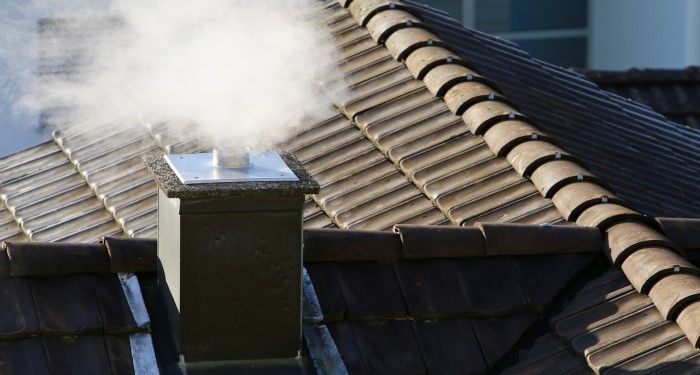
Cost of Hiring a Roofer
For this section we will provide a breakdown of the prices involved in hiring a roofer and the chimney leak repair cost. Our table below breaks down costs such as for fixing damaged flashing and installing a new chimney cap. The price ranges listed are estimates for the country as a whole.
However, costs vary depending on where you are based in the UK. Some of the prices listed below also vary greatly since ease of access to the chimney is a significant factor in determining cost.
| Task | Price |
|---|---|
| Roofer Charge (Hourly) | £14 to £22 per hour |
| Roofer Charge (Daily) | £150 to £250 per day |
| Chimney Flashing Repair | £100 to £250 |
| Fix Damaged Bricks and Mortar | £200 to £1000 |
| Repair a Cracked Chimney Crown | £200 to £1000 |
| Install a Chimney Cap | £100 to £200 |
| Replace Roof Tiles | £175 to £225 |
| Repair Guttering | £480 to £720 |
FAQs
Q: What is a chimney rain cap?
A: A rain cap for a chimney sits atop the flue and protects the chimney from precipitation. While you can purchase a rain cap, a DIY chimney cap is also possible. This cap helps to prevent chimney leaks when it rains.
Q: What is flashing?
A: Chimney flashing is a metallic sheet that makes the point connecting the chimney and roof waterproof.
Q: How long does a chimney crown last?
A: A chimney crown has a life expectancy of up to 75 years.
Q: How often should I clean my chimney?
A: You should clean your chimney at least two times a year.
Q: What type of sealant could I use to fix a chimney?
A: An appropriate silicone sealant can be used although the exact preferable sealant will vary depending on which part of the chimney needs to be repaired.
Sources
- https://lordschimney.com/heavy-rain-can-mean-a-leaky-chimney/
- https://www.permagard.co.uk/advice/fix-damp-chimney-breast
- https://www.damp.co.uk/blog/dont-let-santa-get-damp-dealing-damp-chimney/
- https://www.cmoutfitters.com/normal-rain-come-chimney/
- https://bauerleroofingllc.com/2017/06/13/what-is-chimney-flashing-and-when-to-repair-it/
- https://www.jjroofingsupplies.co.uk/blog/4-reasons-your-chimney-may-be-leaking/
- https://www.completechimneys.com/the-benefits-of-chimney-caps/
- https://www.hetas.co.uk/when-chimney-swept/

